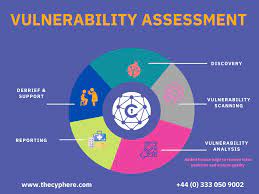Vulnerability assessment is a proactive approach to discovering security loopholes and weaknesses in your IT infrastructure. It also enables you to categorize and prioritize vulnerabilities for remediation.
It enables you to improve IT architecture standards and reduce the likelihood that cybercriminals will gain unauthorized access to your information. It also allows you to prevent denial-of-service attacks (DoS) from crippling your IT systems.
Basics
Humans make software, and while many defects are harmless, others can result in security flaws that can be exploited. It is where Fortinet explains the types of vulnerability assessments. Vulnerability assessments are helpful in this situation because they examine the weaknesses in IT systems that have been discovered at a particular moment to find them before hackers do. Although some tools might provide both, it’s vital to remember that this procedure is distinct from penetration testing within an IT infrastructure. Typically consists of scanning networks, devices, and digital assets using automated tools to identify weaknesses. This process can be ongoing and relies on updates to detect new vulnerabilities as they are discovered.
A vital aspect of the vulnerability assessment is documenting findings to create a record of what’s been discovered. The resulting documentation can help with remediation, training developers in secure coding practices, and other aspects of an organization’s overall risk management strategy.
Defining desirable business outcomes for each assessment in advance is vital. Achieving compliance, preventing data breaches, and reducing recovery time are all reasonable goals for an enterprise. The best way to accomplish these goals is by implementing an entire risk-based vulnerability management program that combines the results of vulnerability assessments, penetration tests, and other security processes into an organizational strategy that will control risks across all business environments.
Discovery
Vulnerability assessments allow you to detect security flaws in your applications, systems, and digital assets – and then take active measures to remediate them. This proactive approach to cybersecurity helps you stay one step ahead of cyber threats and become increasingly cyber-resilient over time.
Using automated processes, vulnerability assessment tools can scan your entire network or specific assets. They identify open ports, services, configuration settings, and patch management for vulnerabilities you must fix. They can also check if your firewall is configured correctly to prevent unauthorized access and detect rogue access points.
The discovery phase identifies potential vulnerabilities hackers may exploit, such as SQL injection or cross-site scripting (XSS) attacks. It can also uncover the escalation of privileges in database systems or servers. Moreover, it can also discover misconfigurations in web application firewalls and expose unsecure versions of popular open-source libraries.
The next phase involves recording the details of these vulnerabilities for further analysis and prioritization. This process allows you to categorize each exposure based on its impact and urgency and then decide how to address it by upgrading an outdated library. By identifying the cause of each vulnerability, you can prioritize which ones to tackle first to ensure the overall security of your organization’s critical systems and data. This way, you can strengthen your defensive posture and reduce the risk of a data breach or ransomware infection.
Reporting
The vulnerability assessment process is not a one-time test that a company does once and then forget about. Instead, it’s an ongoing process that informs the overall vulnerability management program. It helps close the gap between what a threat can exploit and your organization’s ability to defend against it, making the business cyber-resilient over time.
The first step in this process involves identifying and classifying vulnerabilities. It includes determining their severity by using the CVSS score. It is based on many factors, including how severe the exposure is, what part of your security system it impacts, and how easy it would be to exploit.
In addition, a vulnerability assessment can identify active accounts that may belong to disgruntled employees who have left or were laid off. This type of vulnerability can be hazardous, as a disgruntled employee could use those accounts to hack into your systems and cause a lot of damage.
Once you have a list of all the identified vulnerabilities, the next step is to close these gaps. It can be done through system hardening or remediation. The goal is to make your organization less vulnerable to attacks and protect your assets. It can also help your organization achieve compliance, prevent data breaches, reduce recovery time, and reduce the risk of a costly ransomware attack.
Prioritization
As your initial vulnerability scans yield overwhelming numbers of vulnerabilities, you must determine how to prioritize them based on organizational risk. The goal is first to target the most critical vulnerabilities, those already causing damage or providing unwarranted access to your assets.
This step, also called “vulnerability ranking” or “assessment ranking,” is an integral part of any effective vulnerability management program. By prioritizing your vulnerabilities, you can make more intelligent decisions about how to remediate them and focus your efforts on the most pressing threats.
Generally, your team will use CVSS (Common Vulnerability Scoring System) scores to determine which vulnerabilities should be addressed first. However, CVSS scores lack context and should be augmented by temporal and environmental metrics and the likelihood of exploitability. This type of broader risk-based approach is increasingly preferred over simple CVSS scoring.
Keeping your devices, networks, and digital assets safe requires an integrated vulnerability assessment and mitigation program. The best way to accomplish this is through regular scanning and penetration testing and training your staff through a program such as EC-Council’s Certified Ethical Hacker (C|EH). The C|EH curriculum provides the skills to identify, analyze, assess, and mitigate risks and vulnerabilities in various environments.



